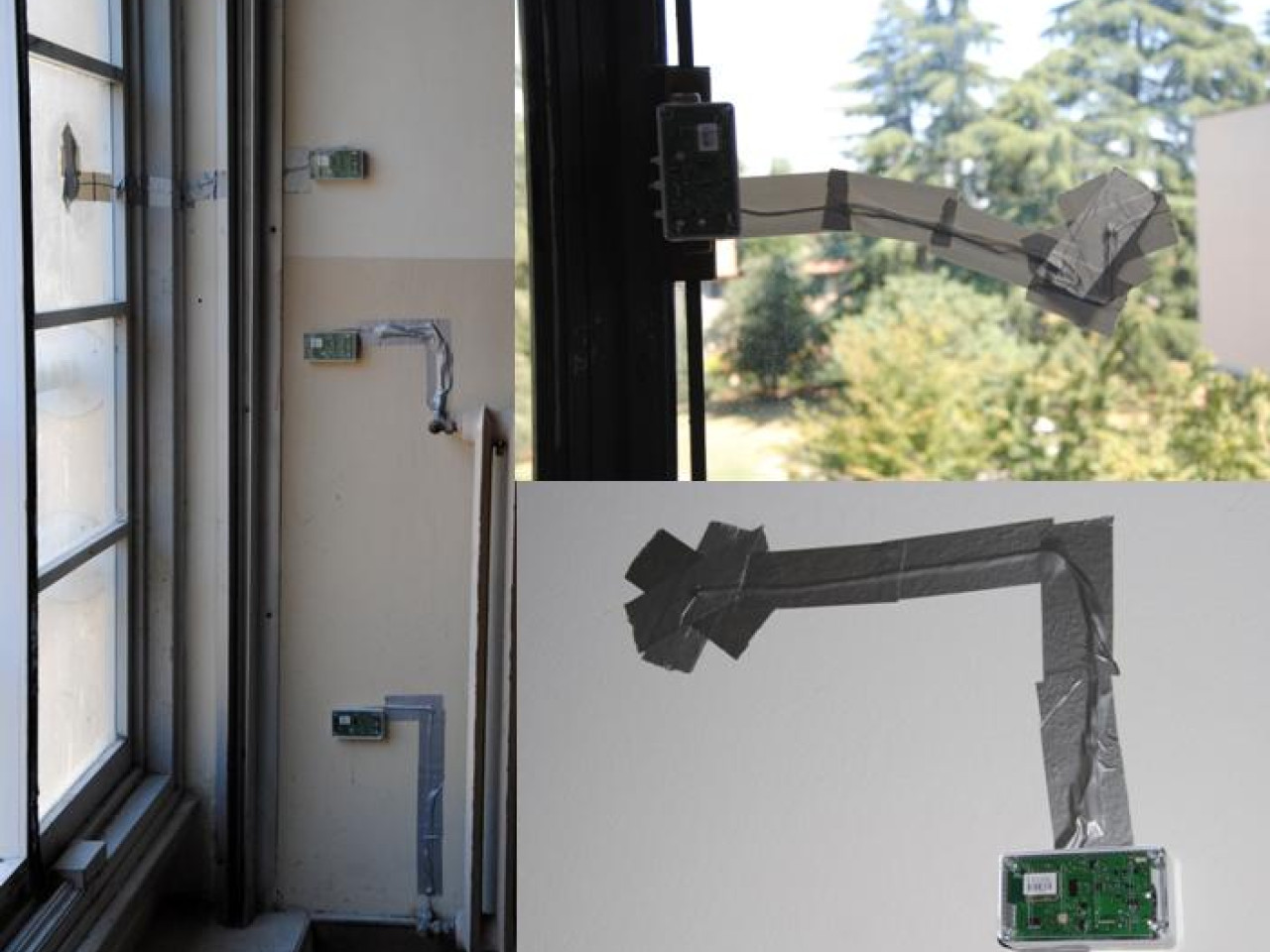The system entails monitoring and storing the main indoor thermal comfort parameters of large sized public buildings, as well as private ones. The monitored parameters are: surface temperatures of internal and windowed walls, indoor air temperature and outdoor climate (external air temperature and relative humidity, wind speed and prevalent direction, horizontal solar global radiation).
 Indoor thermal comfort monitoring
Indoor thermal comfort monitoring
Unlike other monitoring systems, this system enables to monitor the main ambient comfort parameters in real time using measuring instruments that do not require connecting wires. Each wireless sensor communicates the data to an Internet-connected computer; data may be remotely analysed.
The system enables to simultaneously assess the actual thermal comfort conditions of a large number of rooms. Used jointly with a heating and conditioning control system, it could optimise the energy performance of the monitored building, especially in large room number public buildings.
An example of application is at the School of Engineering of Bologna in Viale del Risorgimento 2.
Forty-nine wireless sensors are installed in four classrooms and one office of the School of Engineering; there are about ten sensors for each classroom. Sensors are arranged in order to detect all room surface temperatures (including windowed ones), the indoor air temperature and relative humidity and the radiators' supply and return temperatures. A recording device monitoring the presence and the number of people/students is installed in every classroom. This system is connected to the internet for remote control in order to assess room comfort indices. From the obtained parameters , it was possible to qualitatively measure the actual indoor comfort indexes both for an assessment of the building's energy performance and for correct room utilisation.
- WISPES s.r.l., Via Fanin 48, Bologna;
- CIRI Edilizia e Costruzioni (Ing. Cosimo Marinosci; ing. Giacomo Paci; ing. Luca Boiardi).
This method enhances a real time analysis of the indoor thermal comfort of a number of rooms in the buildings. The added value is better perceived if the system is used jointly with a heating and cooling control system.

